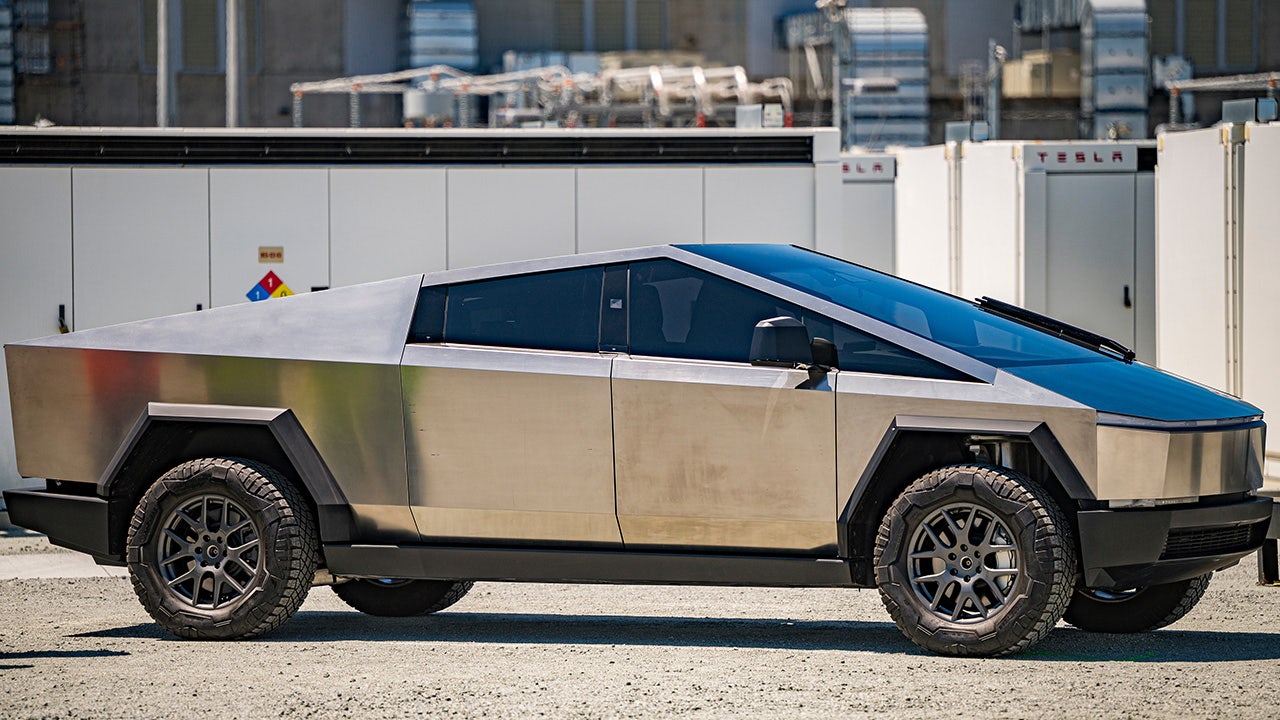The Tesla Cybertruck has sparked a cacophony of reactions since it was unveiled. Its design has polarized opinions, inciting debates between admirers and detractors. Some herald its unconventional aesthetics as revolutionary, while many contend it borders on the absurd. But what is it about the Cybertruck that elicits such strong emotions? To unravel this enigma, one must delve into the design philosophy underpinning this metallic behemoth.
At first glance, the Cybertruck’s design appears brazenly discordant with traditional automotive aesthetics. Its angular silhouette, sharp lines, and monolithic form shoot through the air like an arrow that’s simultaneously a block. Critics have been quick to label it as “ugly,” “futuristic in a bad way,” or simply “weird.” However, these initial reactions fail to appreciate the underlying intent—an audacious departure from the conventional to embrace functionality and uniqueness.
One of the pivotal elements of the Cybertruck’s design philosophy is its commitment to utilitarian principles. Where conventional vehicles tend to prioritize smooth curves and glossy finishes, the Cybertruck embodies a deliberate starkness. This minimalist ethos transcends mere aesthetics; it signals robustness and durability. Constructed from ultra-hard 30X cold-rolled stainless steel, the exterior is not only resilient but also amplifies a sense of industrial integrity. It’s as if the Cybertruck is a blend of a vehicle and an armored fortress—crafted for endurance rather than sheer beauty.
In essence, the faceted exterior aiming to appear as if it were chiseled from a single block of metal serves another purpose. These angular declarations dissipate stress and distribute impacts more efficiently, thereby enhancing safety. This functional focus shifts the paradigm from mere visual appeal to an intriguing interplay between form and function, positioning safety at the forefront of modern design philosophy.
Moreover, it’s essential to consider the broader context of automotive trends when evaluating the Cybertruck’s design. The past decade has seen a pronounced pivot towards the sleek and aerodynamic. Traditional vehicles often embrace curves and smooth lines, designed under the premise that they enhance fuel efficiency and aesthetic desirability. However, Tesla has emerged as a challenger to the status quo, cultivating a narrative that is less about conformity and more about bold unpredictability.
Furthermore, the Cybertruck’s aesthetic may be likened to that of a dystopian vision— a reflection of the modern world’s anxieties and aspirations. In juxtaposing the familiar with the fantastical, the Cybertruck invites conversation about the future of transportation. Its striking appearance may seem jarring by today’s standards, but it provokes a reconsideration of how vehicles can embody identity, symbolism, and even ideology. It poses the question: what does a vehicle of the future look like?
Design philosophy often grapples with the intersection of critique and innovation. The Cybertruck begs the public to confront their preconceived notions of beauty in vehicle design and encourages them to explore the aesthetic’s deeper ramifications. While some may label it an eyesore, there is no denying that it cultivates a clear brand identity. This audacity cultivates intrigue, ensuring it stands out in a saturated market filled with vehicles that, despite their sleek designs, often resemble one another.
Peering deeper into the psyche behind the design, one might draw parallels to modern art. Just as an abstract piece can be met with confusion or disdain, the Cybertruck enacts a similar dialogue in the realm of automotive design. It pushes the boundaries of acceptable aesthetics and calls for a more profound appreciation of artistry that embraces the unconventional. In doing so, it champions originality over conformism, prompting consumers to celebrate the audacious vision that defines the future of mobility.
Moreover, the Cybertruck’s appearance exemplifies a blending of technology with design, as it integrates cutting-edge features synonymous with the Tesla brand. The minimalist cabin with digital interfaces and panoramic views shows the intentional shift towards a tech-centric driving experience. This interplay evolves the perception of functionality within a vehicle, as tech-savvy consumers seek not only a means of transportation but also an extension of their corporate ethos and lifestyle. By embedding these futuristic elements into its grotesque design, the Cybertruck exemplifies a new age of automotive identity.
In conclusion, while at first glance, the Cybertruck may strike many as an archetype of undignified design—evoking memories of fabled wedged constructs from the cartoons of yesteryears—digging deeper reveals a sophisticated interplay of philosophy and purpose. It challenges normative aesthetic viewpoints and amplifies function over form. The ultimate question remains: Is the Cybertruck truly ugly, or does it embody a vision of the future that we are not yet ready to embrace? As the automotive world embraces change, the promise of perspective shifts continues to emerge. In the ever-evolving landscape of vehicle design, perhaps it is time to rethink our definitions of beauty and appreciate how an unyielding pursuit of innovation coalesces into something entirely unique.
